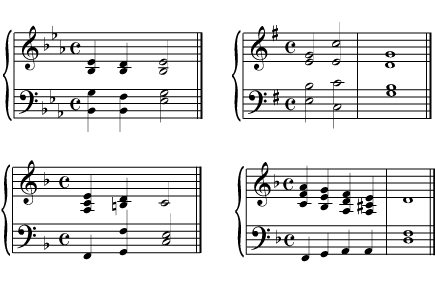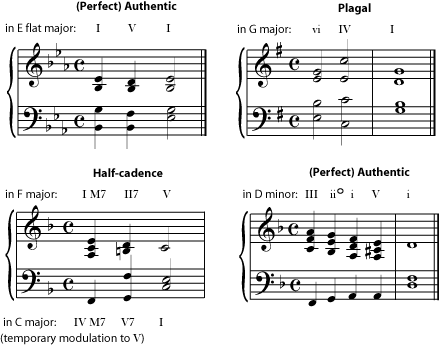| << Chapter < Page | Chapter >> Page > |
Harmonic analysis , form , and cadence in Western music are closely interwoven into a complex subject that can take up an entire course at the college-music-major level. Complicating matters is the fact that there are several competing systems for naming cadences. This introductory course cannot go very deeply into this subject, and so will only touch on the common terms used when referring to cadences. Unfortunately, the various naming systems may use the same terms to mean different things, so even a list of basic terms is a bit confusing.
You can listen to a few simple cadences here: Perfect Cadence , Plagal Cadence , Half-cadence , Deceptive Cadence . The figure below also shows some very simple forms of some common cadences. The first step in becoming comfortable with cadences is to start identifying them in music that is very familiar to you. Find the pauses and stops in the music. Do a harmonic analysis of the last few chords before each stop, and identify what type of cadence it is. Then see if you can begin to recognize the type of cadence just by listening to the music.



Identify the type of cadence in each excerpt. (Hint: First identify the key and then do a harmonic analysis of the progression.


Notice that the half cadence looks like (and in fact is) a modulation to the dominant. In this very common progression, the dominant seventh of the dominant (which requires an accidental) makes the dominant feel like a very strong resting point, and the piece will continue on in the dominant key for a while, before returning to the tonic key. Also notice the accidental required in the minor key to make the (major) dominant chord.

Notification Switch
Would you like to follow the 'Understanding basic music theory' conversation and receive update notifications?